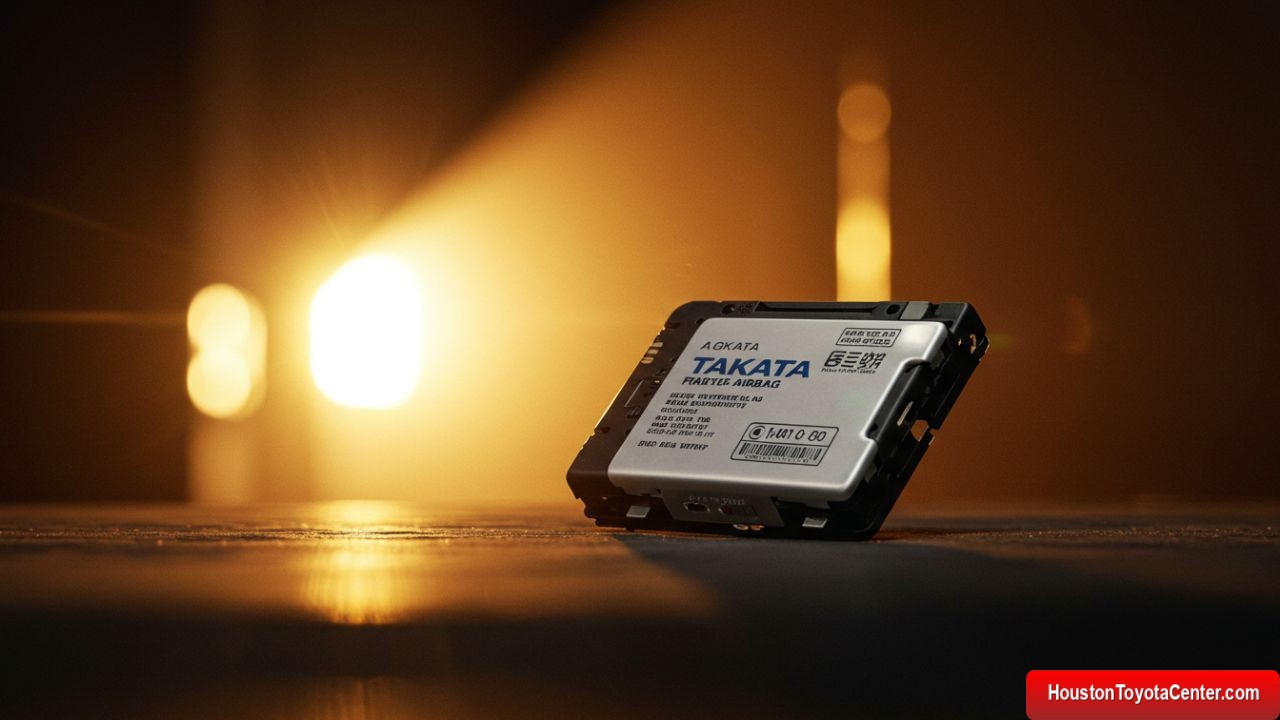In an era of rapid automotive innovation, where cars are equipped with everything from self-driving capabilities to biometric sensors, one legacy feature has quietly morphed into a deadly hazard. This feature, once hailed as a lifesaving breakthrough, is now responsible for injuries, fatalities, and the largest automotive recall in history. Shockingly, it might still be lurking in your garage.
The Hidden Killer: Takata Airbags
At the heart of this crisis lies the Takata airbag inflator, a component found in millions of vehicles worldwide. Designed to deploy airbags during collisions, these inflators contain a critical defect that transforms them into hidden grenades. Over time, moisture and heat degrade the ammonium nitrate propellant inside, causing it to combust explosively. When triggered, the metal inflator housing can rupture, spraying shrapnel at drivers and passengers. To date, these failures have caused 27 deaths and over 400 injuries in the U.S. alone, with millions of vehicles still unrepaired.
A Legacy of Danger: How We Got Here
The story begins in the 1990s, when airbags became mandatory in the U.S. to reduce traffic fatalities. Takata, a Japanese parts supplier, won contracts by offering cheaper inflators that used ammonium nitrate—a volatile chemical avoided by competitors due to safety concerns. Despite early red flags, automakers prioritized cost savings over safety.
Key Timeline of Failures:
- 2000s: Early reports of airbag ruptures surface, but Takata dismisses them as “isolated incidents.”
- 2008: Honda issues its first recall for Takata airbags after a rupture kills a driver.
- 2015: Takata admits fault, triggering a U.S. recall of 19 million vehicles. By 2017, recalls expand to 42 million vehicles and 70 million inflators.
- 2023: Over 100 million inflators globally remain under recall, with repairs lagging due to part shortages and consumer complacency.
Why This Defect Is So Deadly
The Takata airbag crisis isn’t just a manufacturing defect—it’s a ticking time bomb. Unlike other recalls, which involve components like faulty brakes or ignition switches, the danger here is invisible until it’s too late. Key factors make these airbags uniquely hazardous:
FREE: Quickly identify and understand problems with your vehicle 🚘
CLICK HERE- Chemical Instability: Ammonium nitrate deteriorates when exposed to humidity, making older vehicles in hot climates (e.g., Florida, Texas) most at risk.
- Delayed Consequences: A working airbag in 2010 could become lethal by 2023.
- Unpredictable Triggers: Even minor fender-benders can trigger catastrophic failures.
Reported Injuries Include:
- Lacerations from metal shards piercing the face, neck, and chest.
- Blindness, hearing loss, and traumatic brain injuries.
- Deaths caused by severed arteries or impalement.
Case Studies: Lives Lost to a Flawed Design
Behind the statistics are heartbreaking stories:
- Hien Thi Tran (2009): A minor collision in Orlando, Florida, caused her Takata airbag to rupture. A metal fragment sliced her carotid artery, leading to her death. Her Honda Accord was among the first recalled vehicles.
- Carlos Solis (2015): The 35-year-old father was killed in Texas when his Honda Accord’s airbag exploded during a low-speed crash. His family later discovered the vehicle had been under recall for months, but no notice was sent.
- Jewel Brangman (2014): A college student died in a rental car crash when the airbag speared her neck. Her father, Alexander Brangman, became a vocal advocate for recall reform, calling Takata’s actions “corporate homicide.”
Corporate Negligence and Regulatory Failure
The Takata scandal isn’t just an engineering failure—it’s a story of greed, cover-ups, and systemic regulatory lapses.
Takata’s Role:
- Internal emails revealed executives knew about the defect as early as 2000 but concealed evidence to protect profits.
- The company falsified test data for over a decade, misleading automakers and regulators.
- In 2017, Takata pleaded guilty to wire fraud and paid a $1 billion fine before filing for bankruptcy.
Automaker Complicity:
Major manufacturers like Honda, Toyota, and BMW continued using Takata inflators long after risks were evident. Cost-cutting outweighed safety, with some automakers even fighting recalls to avoid financial liability.
NHTSA’s Slow Response:
The National Highway Traffic Safety Administration (NHTSA) faced criticism for deferring to Takata’s excuses. A 2015 Senate report concluded the agency “failed to act with urgency,” allowing preventable deaths to occur.
The Recall Nightmare: Why Millions Remain at Risk
Despite widespread awareness, the recall effort is plagued by challenges:
- Logistical Chaos: Replacement parts are in short supply, leaving drivers waiting months for repairs.
- Consumer Complacency: Many ignore recall notices, assuming recalls only apply to older models.
- Secondhand Vehicles: Used car buyers often inherit unresolved recalls, with dealers failing to disclose risks.
By the Numbers:
| Statistic | Figure |
|---|---|
| Total Recalled Inflators (U.S.) | 70 million |
| Unrepaired Inflators (2023) | ~25 million |
| Vehicles Affected Globally | 100 million+ |
| Estimated Completion Date | 2030 (projected) |
Is Your Vehicle a Death Trap? Here’s How to Check
Don’t assume your car is safe. Follow these steps:
- Visit NHTSA’s Website: Use your VIN at nhtsa.gov/recalls to check for open recalls.
- Contact Your Dealer: Repairs are free, but supplies may be limited. Demand a loaner car if parts are delayed.
- Avoid Used Car Pitfalls: Verify recall status before purchasing a secondhand vehicle.
High-Risk Vehicles Include:
- 2002–2008 Honda Accord
- 2006–2012 Ford Ranger
- 2003–2015 Toyota Corolla
(For a full list, visit Consumer Reports or NHTSA)
The Road Ahead: Lessons for a Safer Future
The Takata saga underscores critical flaws in automotive safety protocols:
- Transparency Matters: Whistleblowers and independent testing must override corporate secrecy.
- Regulators Need Teeth: Agencies like NHTSA require greater authority to enforce recalls and penalize negligence.
- Consumer Vigilance: Drivers must treat recalls as emergencies, not inconveniences.
Automakers are now phasing out ammonium nitrate inflators, but the legacy of distrust remains. As autonomous and electric vehicles rise, the industry cannot afford to repeat history.
Final Warning: Act Now or Risk Your Life
Every unrepaired Takata airbag is a potential death sentence. If you’ve ignored recall notices or bought a used car recently, stop reading this and check your VIN now. Share this article—your vigilance could save a life.
The road to safety begins with awareness. Don’t let your vehicle become another statistic.


Leave a Reply